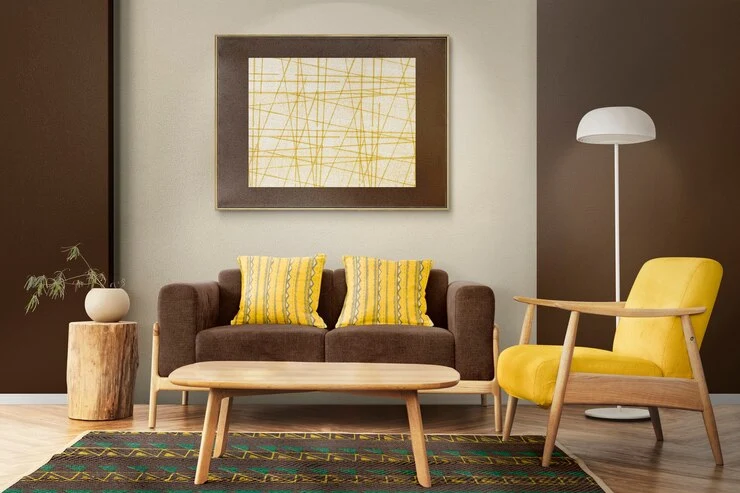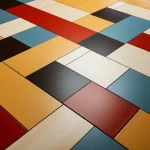Designing your home can be a fun and rewarding process. With the right tips and tricks, you can transform any space into a cozy, stylish haven that reflects your personality. Whether you’re revamping a single room or giving your entire home a makeover, these interior design tips will guide you through creating a beautiful, functional space.
Start with a Plan
Before diving into any design project, it’s important to have a plan. Consider how you want each room to function and what aesthetic you’re aiming for. This helps in making cohesive design choices.
When we moved into our new house, I remember the excitement of planning each room. My husband and I sat down with a notebook and sketched out ideas. This not only made the process smoother but also ensured we stayed within budget.
Mix and Match Patterns and Textures
Don’t shy away from mixing patterns and textures. Joanna Gaines, a well-known interior designer, suggests that “a little bit of eclecticism can add personality and visual interest to a space”. Combining different fabrics, patterns, and textures can create a layered and inviting look.
In our living room, we mixed a striped sofa with a floral rug and added velvet cushions. The result was a space that felt both cozy and sophisticated, with plenty of visual interest.
Lighting Matters
Lighting is crucial in interior design. It sets the mood and highlights architectural features. Kelly Wearstler, an expert in the field, says, “Lighting is the jewelry of the interior. Use a variety of lighting sources to create different moods and highlight different features”.
In our home, we use a mix of floor lamps, table lamps, and overhead lighting to create different atmospheres. For example, dimmable lights in the living room allow for cozy evenings, while bright task lighting in the kitchen helps with cooking and prep work.
Declutter for Clarity
A cluttered environment can negatively impact your ability to focus and make decisions, as highlighted by a study from Princeton University. Keeping your space organized and clutter-free is a simple yet effective design tip.
We regularly declutter our home, ensuring that everything has its place. This not only makes our space look cleaner but also helps us feel more relaxed and focused.
Play with Colors
Color has a profound effect on mood and perception. The Psychology of Color in Marketing by the American Psychological Association (2020) explains how different colors can influence emotions and behavior. Applying these principles to your home can help create the desired atmosphere in each room.
For instance, we painted our bedroom a soft blue to promote relaxation and used energizing yellows in the kitchen to create a lively, cheerful environment.
Scale and Proportion
Scale and proportion are key in creating a balanced and cohesive look. Emily Henderson, an interior designer, advises ensuring your furniture and decor are the right size for the space.
In our small living room, we chose a compact sofa and a slim coffee table to avoid overcrowding the space. This made the room feel more open and airy.
Define Spaces with Rugs
Using area rugs is a great way to define different areas in a room and add a pop of color or pattern. Nate Berkus, a renowned interior designer, suggests using rugs to separate spaces within a room.
In our open-plan living area, we used a large rug to delineate the seating area, making it feel cozy and distinct from the dining space.
Embrace DIY Projects
Don’t be afraid to take on DIY projects. Chip Wade, a carpenter and television personality, encourages homeowners to personalize their space with easy and affordable DIY projects.
One of our favorite DIY projects was building a custom bookshelf for our study. It not only saved us money but also added a unique, personal touch to the room.
Use Houseplants
Houseplants can enhance your decor while improving indoor air quality. According to a study by NASA, certain houseplants have air-purifying properties .
We have incorporated various plants throughout our home, from a tall fiddle leaf fig in the living room to small succulents on our kitchen windowsill. They add a touch of nature and help keep the air clean.
Accessorize Thoughtfully
When accessorizing, think like you’re editing an outfit. Justina Blakeney, an interior designer, suggests starting with a few key pieces and adding more as needed.
In our home, we began with statement pieces like a large mirror and a couple of art prints. We then gradually added smaller items like vases and picture frames, creating a well-balanced and personalized look.
Consider Ceiling Height
Ceiling height can affect how spacious a room feels. A study by the University of Queensland found that higher ceilings can make a space feel more open and airy.
In rooms with lower ceilings, we use vertical lines and tall furniture to draw the eye upward, creating an illusion of height. For example, we hung long curtains close to the ceiling to make our bedroom feel taller and more spacious.
Personal Touches
Adding personal touches to your home makes it uniquely yours. Incorporate items that have sentimental value or reflect your hobbies and interests.
In our home, we have a gallery wall in the hallway filled with family photos and travel souvenirs. Each piece tells a story and makes our home feel truly personal and inviting.
Flexible Furniture
Choose furniture that can adapt to your needs. Multi-functional pieces are especially useful in smaller spaces.
For instance, we have a sofa bed in our guest room that can be used for seating during the day and as a bed for overnight guests. This flexibility allows us to make the most of our space.
Experiment and Have Fun
Interior design is an opportunity to express your creativity. Don’t be afraid to experiment with different styles and ideas. As Joanna Gaines says, mixing patterns and textures can add personality to a space (Joanna Gaines).
When redesigning our living room, we tried various layouts and color schemes before finding the perfect combination. The process was enjoyable, and we ended up with a room that felt uniquely ours.
Conclusion
Designing your home is an exciting journey that allows you to express your personality and create a space that suits your lifestyle. By following these tips and tricks, you can transform any room into a stylish, functional, and inviting space. Remember to plan carefully, mix patterns and textures, use lighting effectively, and add personal touches. With a little creativity and effort, you can create a home that you’ll love for years to come.









